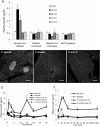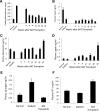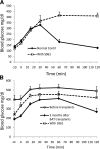Reversal of type 1 diabetes in mice by brown adipose tissue transplant
- PMID: 22315305
- PMCID: PMC3282804
- DOI: 10.2337/db11-0510
Reversal of type 1 diabetes in mice by brown adipose tissue transplant
Abstract
Current therapies for type 1 diabetes (T1D) involve insulin replacement or transplantation of insulin-secreting tissue, both of which suffer from numerous limitations and complications. Here, we show that subcutaneous transplants of embryonic brown adipose tissue (BAT) can correct T1D in streptozotocin-treated mice (both immune competent and immune deficient) with severely impaired glucose tolerance and significant loss of adipose tissue. BAT transplants result in euglycemia, normalized glucose tolerance, reduced tissue inflammation, and reversal of clinical diabetes markers such as polyuria, polydipsia, and polyphagia. These effects are independent of insulin but correlate with recovery of the animals' white adipose tissue. BAT transplants lead to significant increases in adiponectin and leptin, but with levels that are static and not responsive to glucose. Pharmacological blockade of the insulin receptor in BAT transplant mice leads to impaired glucose tolerance, similar to what is seen in nondiabetic animals, indicating that insulin receptor activity plays a role in the reversal of diabetes. One possible candidate for activating the insulin receptor is IGF-1, whose levels are also significantly elevated in BAT transplant mice. Thus, we propose that the combined action of multiple adipokines establishes a new equilibrium in the animal that allows for chronic glycemic control without insulin.
Figures





References
-
- Casey A. Hormonal control of metabolism: regulation of plasma glucose. Surgery 2003;21:128a–128d
-
- Wozniak SE, Gee LL, Wachtel MS, Frezza EE. Adipose tissue: the new endocrine organ? A review article. Dig Dis Sci 2009;54:1847–1856 - PubMed
-
- Ahima RS. Adipose tissue as an endocrine organ. Obesity (Silver Spring) 2006;14(Suppl. 5):242S–249S - PubMed
-
- Hu X, She M, Hou H, et al. Adiponectin decreases plasma glucose and improves insulin sensitivity in diabetic Swine. Acta Biochim Biophys Sin (Shanghai) 2007;39:131–136 - PubMed
-
- Fukushima M, Hattori Y, Tsukada H, et al. Adiponectin gene therapy of streptozotocin-induced diabetic mice using hydrodynamic injection. J Gene Med 2007;9:976–985 - PubMed
Publication types
MeSH terms
Substances
Grants and funding
LinkOut - more resources
Full Text Sources
Other Literature Sources
Medical
Miscellaneous

